When it comes to towing trailers, there is no one-size-fits-all solution. Every vehicle is different, and therefore requires a different type of hitch in order to tow safely and efficiently. In this guide, we will discuss the different types of trailer hitches available and how to pick the best hitch for your vehicle.
Types Of Trailer Hitches
There are so many different applications and uses for towing and so many different vehicle and vehicle types out there that the types of hitches available has grown to meet demand over the years.
There are 7 common types of trailer hitches we’ll be covering in todays guide:
- Rear Receiver Hitch (Class 1-5)
- Bumper Hitch
- Weight Distribution Hitch
- 5th Wheel Hitch
- Gooseneck Hitch
- Pintle Hitch
- Front Mount Hitch
We’ll go through the pros and cons of each hitch type below, as well as what each is best used for.
Rear Receiver Hitch (Class 1-5)
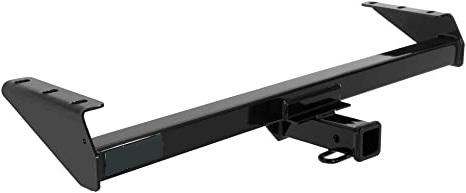
Rear receiver hitches are the most common type of hitch available and can be found on almost any vehicle.
They are classified by their weight capacity, with Class I (Class 1) being the lightest duty and Class V (Class 5) being the heaviest duty.
Receiver hitch sizes increase with the Class number.
Rear receiver hitches are very versatile and can be used for a variety of towing applications, including bike racks, cargo carriers, and trailer lights.
They are also relatively easy to install, making them a great option for those who are not mechanically inclined.
A receiver hitch features a square tube on the end that accepts different towing accessories, such as bike racks or trailer ball mounts.
Rear receiver hitches are great for use with nearly any type of towable ranging from a hitch cargo basket, jet ski trailer, pop-up campers, boat and utility trailers, all the way to full-size travel trailers.
We’ve put together a guide on parts of a trailer hitch for receiver hitches since they’re so common, so check that out if you have or are considering a rear receiver hitch.
Bumper Hitch
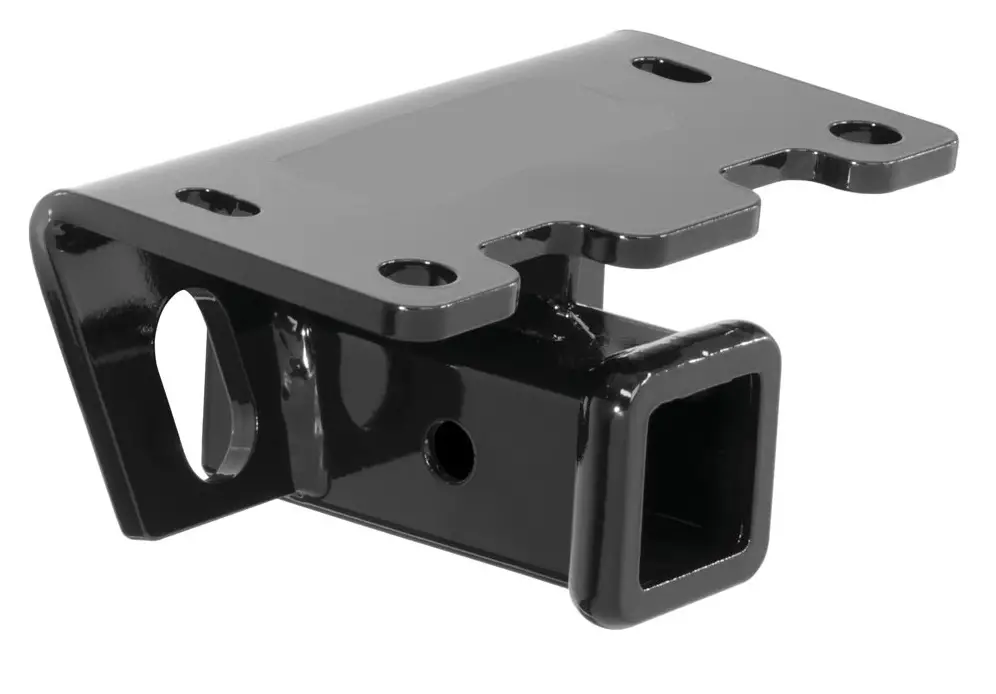
A bumper hitch is a type of hitch that mounts to the rear bumper of a vehicle.
These hitches are also quite common because they’re easy to install and are attached directly to the bumper of almost any vehicle.
This provides a square tube like a rear receiver hitch does for use with towing ball mounts or other towing accessories.
The receiver insert sizes range from 1-1/4″ to 3″ and can provide between 2,000 to 21,000 lbs of max towing capacity.
The key limitation here is that this hitch can only tow as much weight as your bumper can.
Because of this, bumper hitches are typically used for lighter loads, such as bike racks, small trailers, or pop-up campers.
Weight Distribution Hitch
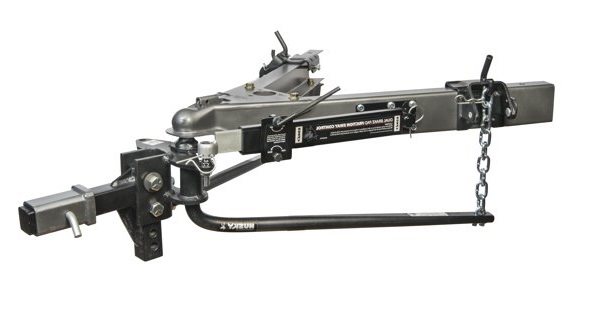
A weight distribution hitch is a type of trailer hitch that is used to distribute the tongue weight of a trailer evenly across the axle of a vehicle.
Another name for this type of hitch is a sway control hitch.
Weight distribution hitches utilize long rods called “spring rods” which provide leverage against the connection point to reduce the downward tongue weight at the connection point.
This is important because it helps to prevent sag and increases stability while towing.
Weight distribution hitches are typically used for heavier trailers, such as travel trailers or fifth-wheel trailers.
These hitches are more complex than bumper hitches or rear receiver hitches, and therefore can be more difficult to install.
However, once installed properly, a weight distribution hitch provides a much smoother ride while towing and can be a great option for those who frequently tow heavy loads.
It’s important to note that weight distribution hitches typically aren’t standalone, and are usually mounted to a rear receiver hitch.
They’re still classified as a type of hitch anyway, but are also referred to as hitch stabilizers.
5th Wheel Hitch
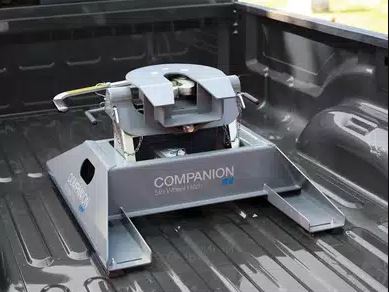
A fifth wheel hitch is a type of hitch that mounts in the bed of a pickup truck and is used to tow a fifth wheel trailer.
Fifth wheel trailers are typically larger and heavier than travel trailers, and as such require a more heavy-duty hitch for towing.
Fifth wheel hitches mount directly to the frame of a pickup truck near the rear axle and provide a strong connection point for towing.
The connection is a little like the opposite of a trailer ball, where the 5th wheel hitch has a U-shape mechanism with locking jaws that closes around a kingpin on the trailer.
These hitches can provide up to 30,000 lbs of max towing capacity, making them ideal for use with large fifth wheel trailers.
Installing a fifth wheel hitch can be more difficult than other types of hitches because it requires drilling into the bed of the truck.
However, once installed properly, a fifth wheel hitch provides a very stable connection for towing even the heaviest of loads.
It’s important to note that 5th wheel hitches are only available for pickup trucks.
Gooseneck Hitch
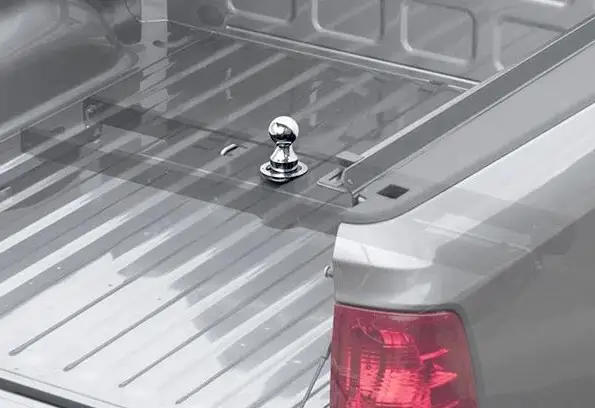
A gooseneck hitch is a type of trailer hitch that mounts to the bed of a pickup truck and is used to tow a gooseneck trailer.
Gooseneck trailers are similar to fifth wheel trailers in that they are typically larger and heavier than travel trailers.
However, unlike fifth wheel hitches, gooseneck hitches mount directly to the frame of the truck near the cab.
This provides a shorter distance between the connection point and the trailer axle, which helps to improve stability while towing.
Gooseneck hitches look like a trailer ball protruding from the bed of the truck, which is where the gooseneck trailer coupler sits on.
Gooseneck hitches can provide up to 30,000 lbs of max towing capacity, making them ideal for use with large gooseneck trailers.
Installing a gooseneck hitch can be more difficult than other types of hitches because it also requires drilling into the bed of the truck.
A gooseneck hitch provides a very stable connection for towing even the heaviest of loads.
Just like 5th wheel hitches, gooseneck hitches are only available for pickup trucks.
You’ll see gooseneck hitches most often used with car haulers, large flatbeds, livestock trailers, or other industrial and commercial trailers.
Pintle Hitch
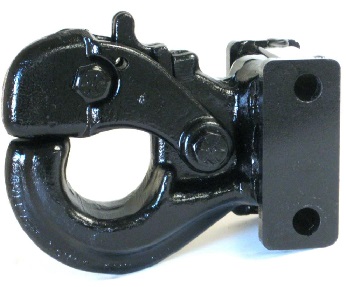
A pintle hitch is a type of hitch that uses a pin and collar system for towing.
Pintle hitches are typically used for heavy-duty towing applications, such as with military trailers or construction equipment.
The pintle hitch consists of a large metal pin (the “pintle”) that inserts into a receiver on the vehicle, and a ring (called the lunette), which that secures the pin in place.
Pintle hitches provide up to 60,000 lbs of max towing capacity and are commonly found on dump trucks, construction and industrial equipment, agricultural applications, and even military vehicles.
They allow for a wider range of motion than a tow ball, which makes them better for off-road use like construction or farming.
Front Mount Hitch
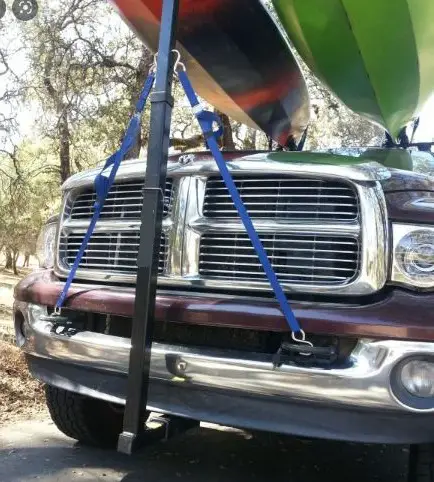
A front mount hitch is similar to a rear receiver hitch, except it is bolted to the frame in the front of your vehicle.
Beyond that, the look is pretty similar, with a receiver tube that accepts different accessories.
Common uses for front mount hitches area snow plows, winches, spare tire mounts, cargo baskets, and more.
Front mounts are usually rated for less weight than rear receiver hitches.
Different Types Of Trailer Hitches: Wrapping Things Up
You’ll see trailer hitches on every type of vehicle.
There are many different types of hitches available on the market today.
Each type of hitch is designed for a specific purpose and has its own set of advantages and disadvantages.
When choosing a hitch, it’s important to consider your vehicle’s towing capacity, what you’ll be using it for, and how much weight you’ll be towing.
With so many options available, there’s sure to be a hitch that’s perfect for your needs.


